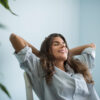In recent years, a vibrant purple root vegetable known as ube has been making waves in the culinary world. Originating from the Philippines, this unique ingredient has gained popularity not only in its native country but also globally. Ube, also referred to as purple yam, is not only visually stunning with its striking hue but also offers a delightful flavor profile that sets it apart from other ingredients.
Ube has become particularly renowned for its role in Filipino desserts, where it adds a distinct taste and captivating color to various sweet treats. From traditional cakes and pastries to ice creams and puddings, ube has found its way into numerous delectable creations that have captured the hearts and palates of food enthusiasts worldwide.
The increasing popularity of ube can be attributed to several factors. Firstly, its vibrant purple color makes it visually appealing and Instagram-worthy, contributing to its rise as a popular food trend. Additionally, the unique flavor of ube offers a delightful combination of earthy sweetness with subtle hints of nuttiness, making it an intriguing ingredient for those seeking new and exciting taste experiences.
Furthermore, the growing interest in international cuisine and exploration of diverse flavors has played a significant role in the surge of popularity for ube. As people become more adventurous with their culinary choices, they are increasingly drawn to exotic ingredients like ube that provide them with an opportunity to expand their gastronomic horizons.
Ube’s rise in popularity can be attributed to its vibrant color, distinct flavor profile, and growing interest in global cuisine. Whether you’re indulging in traditional Filipino desserts or exploring innovative recipes incorporating this versatile ingredient, there’s no denying that ube has established itself as an exciting culinary phenomenon that continues to captivate food lovers around the world.
Exploring Ube Recipes: From Classic Desserts to Savory Dishes
Ube, also known as purple yam, has gained immense popularity in the culinary world for its vibrant color and unique flavor. In this section, we will delve into the realm of ube recipes, exploring a wide range of options from classic desserts to savory dishes that showcase the versatility of this delightful ingredient.
When it comes to ube desserts, there is an array of mouthwatering options to choose from. Whether it’s a traditional Filipino dessert like ube halaya (a sweet jam-like spread) or modern creations like ube cheesecake or ube ice cream, these recipes are sure to satisfy any sweet tooth.
However, the versatility of ube extends beyond desserts. Ube can be incorporated into savory dishes as well, adding a delightful twist to traditional recipes. From ube gnocchi and purple yam fries to creamy ube soup and even savory pies with an unexpected purple filling, these dishes offer a unique and visually stunning dining experience.
Whether you are an avid baker looking for new dessert ideas or an adventurous cook seeking innovative flavors in your savory dishes, exploring the world of ube recipes is sure to ignite your culinary creativity. Join us as we embark on a journey filled with delightful flavors and vibrant hues that celebrate the wonders of this beloved purple yam.
– Ube Halaya (Purple Yam Jam)
Indulge in the rich and vibrant flavors of Ube Halaya, a traditional Filipino dessert that will transport your taste buds to a world of sweet delight. Known for its striking purple hue, Ube Halaya, also referred to as Purple Yam Jam, is a beloved treat that holds a special place in Filipino cuisine.
Creating this delectable dessert is made easy with the right ube halaya recipe. From the moment you gather the ingredients to the final presentation on your dessert table, preparing Ube Halaya becomes an enjoyable culinary adventure. The recipe typically calls for simple yet essential components such as ube (purple yam), coconut milk, condensed milk, and butter. These ingredients come together harmoniously to create a velvety smooth jam-like consistency that is both visually captivating and irresistibly delicious.
Ube Halaya has become an iconic Filipino delicacy enjoyed during special occasions and everyday gatherings alike. Its unique flavor profile offers a delightful blend of earthy sweetness with hints of nuttiness. Whether served on its own or as a topping for various desserts like halo-halo or ice cream, Ube Halaya never fails to leave a lasting impression on those fortunate enough to experience its enchanting taste.
So why not embark on this culinary journey and discover the magic of Ube Halaya? Whip up this traditional Filipino dessert using an authentic ube halaya recipe, and let your senses be captivated by its vibrant color and exquisite flavor. Elevate your dessert repertoire with this delightful treat that pays homage to Filipino heritage while satisfying your sweet cravings in the most delightful way possible.
– Ube Ice Cream and Other Frozen Treats
Indulging in frozen treats is always a delightful experience, and one unique flavor that has been gaining popularity is ube ice cream. Made from the vibrant purple yam, this frozen delight offers a delightful blend of sweet and earthy flavors that captivate the taste buds. In this section, we will explore the world of ube ice cream and other frozen treats featuring this delectable ingredient.
For those who are curious about making their own ube ice cream, we will provide you with an enticing ube ice cream recipe that will guide you through the process step by step. From sourcing fresh purple yams to creating a smooth and creamy base, you’ll be able to recreate this Filipino-inspired dessert right in your own kitchen.
But why stop at just ube ice cream? We’ll also delve into other exciting frozen treat options that feature purple yam as their star ingredient. From popsicles to sorbets, there are plenty of creative ways to incorporate the unique flavor of ube into your icy indulgences.
Whether you’re a fan of traditional desserts or simply looking for something new and adventurous to try, exploring the world of ube ice cream and other frozen treats is sure to satisfy your cravings. So grab your spoon and get ready to embark on a flavorful journey with these purple yam delights!
– Ube Pancakes and Baked Goods
Indulging in the delightful world of ube pancakes and baked goods is an experience that will leave your taste buds craving for more. Ube, a vibrant purple yam native to the Philippines, adds a unique and irresistible flavor to these delectable treats.
If you’re looking for an unforgettable breakfast or brunch option, look no further than the mouthwatering ube pancakes recipe. The combination of fluffy pancake batter infused with the rich and earthy essence of ube creates a harmonious blend that will have you reaching for seconds.
But it doesn’t stop there. Ube has also become a star ingredient in various bakery items, adding its distinct color and flavor to pastries, cakes, and breads. From fluffy ube rolls filled with sweet coconut cream to moist ube chiffon cakes topped with luscious frosting, each bite is a burst of pure bliss.
Whether you’re an avid foodie or simply seeking new culinary adventures, exploring the world of ube pancakes and baked goods is an absolute must. So why not treat yourself to these delightful creations and discover the magic that lies within each mouthwatering bite?
The Nutritional Benefits of Ube: A Surprisingly Healthy Ingredient?
Ube, also known as purple yam, is not only a delicious ingredient but also surprisingly packed with nutritional benefits. This vibrant root vegetable has been gaining popularity in recent years for its unique flavor and stunning purple hue. However, what many people may not realize is that ube offers a plethora of health benefits that make it a valuable addition to any diet.
One of the standout features of ube is its high nutritional content. It is rich in essential vitamins and minerals, including vitamin C, vitamin A, potassium, and manganese. These nutrients play vital roles in supporting overall health and well-being.
The deep purple color of ube comes from the presence of anthocyanins, which are powerful antioxidants known for their anti-inflammatory properties. These antioxidants help protect the body against oxidative stress and reduce the risk of chronic diseases such as heart disease and certain types of cancer.
Additionally, ube is a great source of dietary fiber. Fiber plays a crucial role in maintaining healthy digestion and promoting feelings of fullness, which can aid in weight management. It also helps regulate blood sugar levels by slowing down the absorption of glucose into the bloodstream.
Furthermore, studies have suggested that consuming foods rich in anthocyanins like ube may have positive effects on brain health. These compounds have been linked to improved cognitive function and a reduced risk of age-related cognitive decline.
Incorporating ube into your diet can be done in various ways – from using it as an ingredient in desserts like ice cream or cakes to incorporating it into savory dishes such as soups or stews. Its versatility allows you to enjoy its nutritional benefits while indulging your taste buds.
While often celebrated for its unique taste and vibrant color, ube deserves recognition for its impressive array of nutritional benefits too. From being an excellent source of vitamins and minerals to offering antioxidant properties and aiding digestion, this humble purple yam proves that healthy ingredients can be both delicious and nutritious. So, why not explore the world of ube and reap the rewards it has to offer for your overall health and well-being?
The Cultural Significance of Ube: Insights into Filipino Cuisine and Traditions
Ube, the vibrant purple yam, holds a special place in Filipino cuisine and traditions. Its cultural significance goes beyond its unique flavor and eye-catching hue. Exploring the role of ube in Filipino culinary heritage provides valuable insights into the rich tapestry of Filipino culture.
In Filipino cuisine, ube is a versatile ingredient that finds its way into a variety of dishes – from traditional desserts like halo-halo and bibingka to modern creations such as ube-flavored ice cream and pastries. Its distinct taste adds depth and sweetness to these delicacies, making them truly memorable.
Beyond its culinary applications, ube holds deep-rooted cultural symbolism. In Filipino traditions, the color purple is associated with royalty, spirituality, and nobility. Ube’s vibrant purple hue reflects these values and is often used in festive occasions like weddings and fiestas.
Moreover, the cultivation and consumption of ube have become an integral part of local farming practices in the Philippines. The farming communities take pride in growing this indigenous crop sustainably while preserving their agricultural heritage.
By delving into the cultural significance of ube in Filipino cuisine and traditions, we gain a deeper appreciation for the diverse flavors and customs that shape this vibrant Southeast Asian nation. Understanding how an ingredient like ube weaves itself into everyday life helps us connect with Filipinos on a more profound level while celebrating their rich culinary heritage.
Is Ube Healthy?
Is Ube healthy? That’s a question many people have been asking as this vibrant purple root vegetable gains popularity in the culinary world. Ube, also known as purple yam, is not only visually appealing but also packed with nutrients.
One of the main reasons why Ube is considered healthy is its rich antioxidant content. Antioxidants help protect our cells from damage caused by harmful free radicals, which are associated with various diseases and aging. Ube contains anthocyanins, a type of antioxidant that gives it its striking purple color and has been linked to numerous health benefits.
Additionally, Ube is a great source of fiber. Fiber plays a crucial role in maintaining digestive health and promoting regular bowel movements. It also helps control blood sugar levels and can contribute to weight management by promoting feelings of fullness.
Furthermore, Ube is low in calories and fat, making it a suitable choice for those watching their weight or following a balanced diet. It also provides essential vitamins and minerals such as vitamin C, potassium, and manganese.
However, it’s important to note that the overall healthiness of Ube depends on how it’s prepared and consumed. While the vegetable itself is nutritious, some popular dishes or desserts made with Ube may be high in added sugars or unhealthy fats.
When consumed in moderation and prepared in a healthy manner, Ube can be part of a well-rounded diet. Its vibrant color and nutritional profile make it an appealing choice for those looking to add variety to their meals while enjoying its potential health benefits.
Ube in Popular Culture
Ube, a vibrant purple yam native to the Philippines, has been making waves in popular culture. From its unique flavor to its eye-catching hue, ube has captured the attention of food enthusiasts and social media influencers alike.
In recent years, ube has become a star ingredient in various culinary creations, ranging from traditional Filipino desserts like halo-halo and bibingka to modern twists such as ube-flavored ice cream and pastries. Its distinct taste and striking color have made it a favorite among chefs and bakers who are constantly seeking innovative flavors to captivate their audiences.
But it’s not just in the culinary world where ube is leaving its mark. This vibrant yam has also found its way into other aspects of popular culture. From fashion trends featuring shades of purple reminiscent of ube’s hue to social media challenges centered around creating visually stunning dishes using this versatile ingredient, ube has become a symbol of creativity and cultural pride.
Moreover, the rise of Filipino cuisine on the global stage has further propelled the popularity of ube. As more people discover the rich flavors and unique ingredients that Filipino cuisine offers, they are also discovering the allure of this humble yam. Ube’s presence in popular culture serves as a testament to the growing appreciation for diverse flavors and cultural influences in today’s society.
Whether it’s tantalizing taste buds with delectable desserts or adding a pop of color to social media feeds, ube is undeniably making its mark in popular culture. Its versatility and visually appealing qualities have garnered attention from food enthusiasts and beyond, solidifying its place as an iconic ingredient that continues to inspire creativity across various realms.
Tips for Cooking with Ube: Techniques and Substitutions
When it comes to cooking with ube, the vibrant purple yam, there are a few techniques and substitutions that can help you create delicious dishes. Whether you’re a seasoned chef or just starting out in the kitchen, these tips will ensure your ube creations turn out perfectly.
First and foremost, it’s important to properly prepare the ube before using it in your recipes. Start by peeling and boiling the yam until it becomes soft and tender. This will make it easier to mash or puree for use in various dishes such as cakes, ice creams, or pastries.
If you find yourself without fresh ube on hand or have difficulty sourcing it locally, there are substitutes available that can still provide a similar flavor profile. Purple sweet potatoes or taro can be used as alternatives for ube in certain recipes. While they may not have the exact same taste as ube, they can still add a delightful purple hue and unique flavor to your dishes.
When incorporating ube into baked goods like breads or muffins, consider using it as a replacement for other starchy ingredients such as bananas or pumpkin puree. This substitution not only adds an interesting twist but also enhances the color and taste of your final product.
Experimenting with different combinations of flavors is another way to elevate your cooking with ube. Consider pairing it with ingredients like coconut milk, pandan leaves, or even chocolate to create exciting and unexpected flavor profiles that will leave your taste buds wanting more.
Cooking with ube opens up a world of culinary possibilities. By following these tips for techniques and substitutions, you’ll be able to create delectable dishes that showcase this vibrant purple yam in all its glory. So go ahead and get creative in the kitchen – let the magic of ube inspire your next culinary masterpiece!
Conclusion: Embark on a Culinary Adventure with the Vibrant Flavor of Ube!
Ube, a vibrant and versatile ingredient, has taken the culinary world by storm. Its unique flavor and stunning purple hue have captivated food enthusiasts across the globe. From traditional Filipino desserts to modern twists on classic dishes, ube has become a staple in many kitchens.
In this culinary adventure, we have explored the various ways in which ube can be incorporated into your cooking. Whether it’s indulging in a creamy ube halaya or savoring a fluffy ube chiffon cake, there is no shortage of delicious creations to be made with this remarkable ingredient.
Not only does ube add an exciting pop of color to your dishes, but it also offers a delightful flavor that is both sweet and nutty. Its versatility allows it to be used in both sweet and savory recipes, making it an excellent choice for experimenting with new flavors.
As we conclude this journey into the world of ube, we encourage you to embark on your own culinary adventure. Explore the endless possibilities that this vibrant ingredient brings to your kitchen. Let your creativity soar as you create mouthwatering dishes that showcase the unique flavor and beauty of ube.
So why wait? Grab some fresh ube from your local market or try out some ready-made products and start infusing your recipes with the vibrant flavor of this purple delight. Whether you’re a seasoned chef or an amateur cook, let the magic of ube elevate your culinary creations and transport you to a world filled with color and taste sensations like never before!










